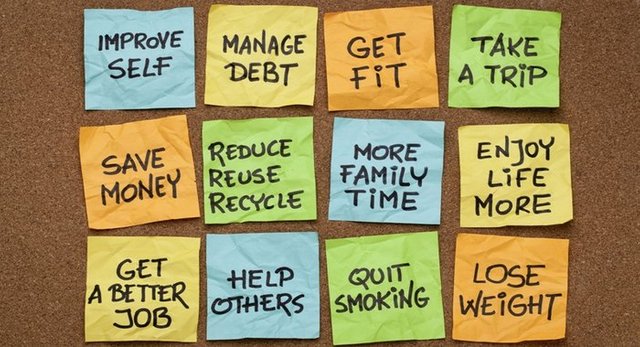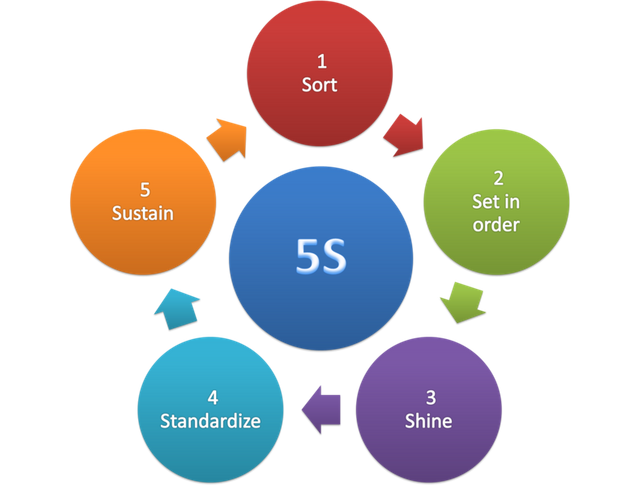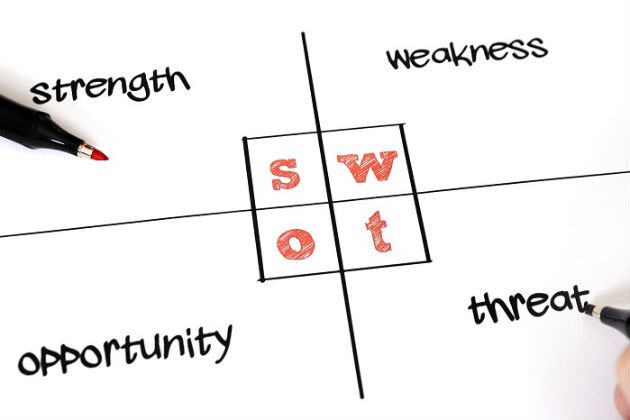Thinking Beyond the New Year's Resolution - My Personal Positive Changes for This Year
Thinking Beyond the New Year's Resolution
Applying 5s Principles to Personal Life

It's too easy to associate life changes and goals to dates on a calendar. But that really isn't the proper measuring stick to use to gauge your success in self-improvement. It's too easy to give up and say "Oh well! I'll try again next year!"
I currently work in a job where we employ the principles of 5s/6s (Visual Workplace Standards) and Continuous Improvement. Both of these principles have taught me much in keeping a functional and efficient work space. So I decided that many of these principles can be applied to my personal life to bring about the same positive effects.
What are the Visual Workplace Standards?
Part 1 - Sorting
Visual Workplace or "Lean Workplace" is a workplace organization methodology that is built around five Japanese words: seiri (整理), seiton (整頓), seisō (清掃), seiketsu (清潔), and shitsuke (躾). These have been translated as "Sort", "Set In order", "Shine", "Standardize" and "Sustain"
In our workplace, we add a 6th "S" which is for "Safety", but our emphasis is on the original five concepts.

The first thing I'd like to point out about this methodology is that it has no beginning or end - as it is illustrated in the diagram shown here.
5s is not a plan with a beginning that you follow to an end. It is a CONTINUOUS, never-ending way of living with a focus on CONTINUAL IMPROVEMENT.
Continual Improvement is a great way to look at your environment. It allows you to assess where you are currently at (even if just mentally), and to compare it where you were yesterday, last week, or last year... Is it better? If your answer is yes, then you are doing things right. If your answer is no, then congratulations! You have identified an area of future improvement and that's the first step! Is it perfect? Never! It's a system of baby-steps and small achievable goals.
Some basic tips that we use for implementing 5s at work are:
- Categorize: This falls under the first step of Sorting.
- Everything you use needs a place. Find a place for it that makes sense. Label that area so that it is dedicated to the object. Items that you use often should be near the place that they are used and easily accessible. Having these spaces labeled helps with you Sustain the improvements made.
- Items that are used less often should be kept in an area that is less accessible so that it does not get in the way or clutter your space.
- Categorize items according to how often you use it: Daily/Weekly/Monthly, etc. Create spaces for them in accordance with these categories.
- Things that haven't been used in a year should be discarded or red-tagged if you are unsure about discarding it.
- Red-tagged items are kept in a Red-tag area. If an item has been in the Red-tag area for a year, it should be discarded. You can always buy a new one if you need it some time in the future - but right now, it's just clutter.
Remember that this is a CONTINUAL process. There will never be a time when you are finished with this. You will be acquiring new things all the time and they need to be incorporated into this process. You will also be disposing of old, broken, no-longer-useful items. This will free up storage locations which need to be reassigned or relabeled accordingly.
If you watch the Netflix program Tidying Up with Marie Kondo, you will see many similarities between her methods and 5s. I highly recommend that you watch this show if you want to learn more about this process.
Applying 5s to My Personal Life
I have decided to take the principles of 5s and not-only apply them to my home, but to apply them to my Self. I've taken some time retrospecting, meditating, and thinking about me and my life.

- I stopped drinking alcohol. (This was something I was holding on to that was basically clutter)
- I am eating a healthy paleo diet. (This is a daily tool, I keep close)
- I am taking online classes to improve my skill set (Another daily tool that I keep close).
These three little steps have already made massive changes for the better in my life. I am healthier and have lost a lot of weight. I also feel better physically and emotionally.
Your "useful items" and "clutter" will be different than mine, but remember that this is a continual process. I had some drinks this week. I'm not beating myself up over it or calling myself a failure for it. I took notice of the fact that I did not really enjoy the drinks and that my psoriasis has flared up as a result. I also look at this as a win because I used to drink nearly every day, but I've only had a few drinks in the past month. This is a major improvement, and I know that the next month will be even better.
[to be continued]